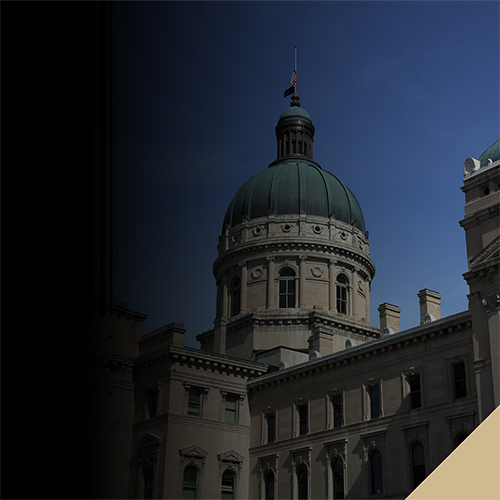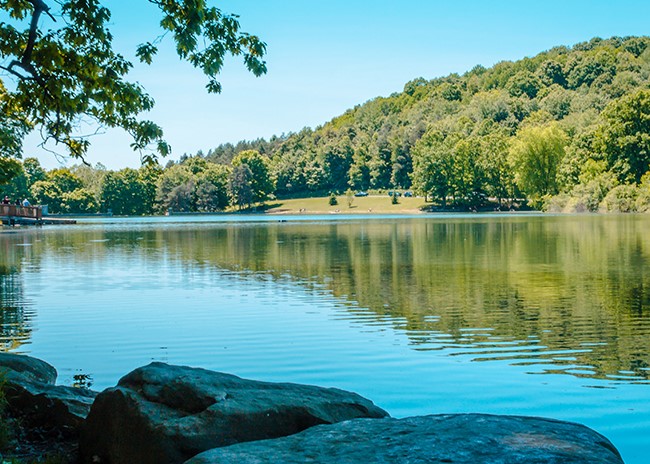Analyze Results

~by Heather Strohm
Regional Extension Educator, Community Development – Purdue University
Driving across dusty country roads, we often find tattered traffic signs, including old detour signs that invite us to create a new path or stay on course. Seeing a green traffic light might solicit a quick glance before the gas pedal is applied and the vehicle propels forward. Yellow lights and caution lights implore a bit more awareness. Perhaps, a slower speed due to oncoming traffic. Maybe a caution light due to environmental circumstances. Political climates. And then there is the red light. RED LIGHTS! That is a time to stop. Ensure that you are proceeding safely and in the correct pathway forward. During a red light, energy is used to absorb the situation around you to make better decisions moving forward. Businesses experience the same rollercoaster.
As an atlas guides the navigator, a business also needs an atlas to navigate both promising and challenging situations. While companies frequently find themselves intensely focused on their operations, they also need to keep an active watch to identify the challenges that may compromise navigating a business’s operation. In this vein, during Module 4 of our Business Retention and Expansion Program (BR&E), the Task Force begins to perform a quantitative and qualitative analysis of the companies visited.
As a part of the BR&E process, the company site visits are broken down and diagnosed during each meeting. Visual diagrams begin to spread across the meeting space. Typically, private water cooler conversations begin to take place between all the Task Force members during the meeting. Site visit details are outlined from the survey instrument, and through facilitated coaching, members are asked to explore potential challenges facing each company and the business community overall.
In conversations such as these, company needs begin to emerge that were not previously noted in the survey instrument. Consider, for example; a CEO stated they were considering selling the company. However, no succession plan has been developed. What impact might the transition of ownership have on employment, quality of life, company goodwill and the lists continue forward? Each business has special needs that require individual attention. Module 4 allows the Task Force to better navigate the company’s needs and match them with available resources or identify how to connect them with suppliers, providers and other services they need.
As companies continue their journey, there may be a traffic jam, just like in life. Why was the accident caused? Or maybe it was road construction? Companies have a responsibility to their employees and stakeholders to navigate and explain the outcomes of their “trip.” Through the BR&E program, community, regional and statewide trends are identified. These trends help promote opportunities when they are positive. Should there be a concern with a trend, this permits the Task Force ample time to develop a tactical strategy for response based on the information and resources needed. As such, this trend analysis can help businesses avoid or navigate through the traffic jam.
Here in Indiana, the BR&E Module 4 Outcomes have included:
- An identified company was considering relocation of Headquarters to another state. Impact would have been substantial regarding job loss. Task Force Members worked with local leaders and company owner to develop a plan to retain the company in Indiana.
- A company was dealing with high operating expenses caused by untrained personnel causing damage to residential property. Task Force Members worked with Ivy Tech Community College, local leaders, and business owner to organize an employee training certification program. The result was decreased operating expenses and increased customer satisfaction.
- A downtown Main Street wished to elevate its existing downtown business sector by establishing a more refined ecosystem. The Task Force Members developed cross-promotional relationships between downtown businesses, the Chamber of Commerce, new welcome resident packages, and realtors. As businesses continue to connect and support one another in this community, new roads are being paved, and First Fridays are planned.
Whether it is an Atlas, GPS or back in the day when 47 pages of MapQuest were stapled together for directions, one still needed to identify a pathway from Canada to Mississippi. The map system allowed us to travel more efficiently. Module 4 is compiling all the data from Module 3’s question banks and the site visits to better position your county’s businesses and the community as a whole for economic sustainability, quality of life and collaborative leadership initiatives. Consider Module 4 as the place on the map where you determine which road to take and whether you should hit the gas, pump the breaks or stop and have lunch for a moment to regain your direction—all based on the traffic lights of business operations.


